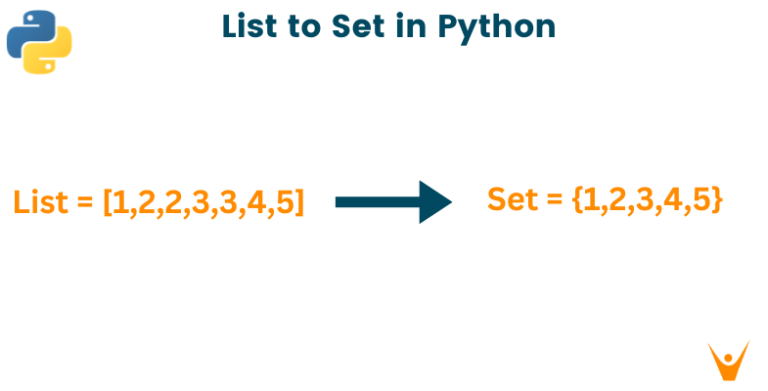The Ultimate Guide to Cloud Migration Strategy in 2024
Are you planning to move your data, applications, and services to the cloud? Do you want to know how to create a cloud migration strategy that ensures your success and competitiveness in 2024 and beyond? If yes, you’re in the correct spot. In this guide, we will show you what cloud migration strategy is, why you need it in 2024, and how to create it. Let’s get started.
What is Cloud Migration Strategy?
A cloud migration strategy is a plan that defines your goals, scope, approach, and best practices for migrating your resources to the cloud. Cloud migration is the process of moving your data, applications, and services from your on-premise or legacy infrastructure to the cloud. Cloud migration can offer many benefits, such as scalability, agility, cost-efficiency, security, and innovation. However, cloud migration also comes with many challenges, such as complexity, compatibility, compliance, and governance. Therefore, you need a cloud migration strategy to plan, execute, and optimize your cloud migration journey.
Why Do You Need a Cloud Migration Strategy in 2024?
Cloud migration is not a one-time event, but a continuous journey that requires constant evaluation and adaptation. As the cloud technology and market evolve rapidly, you need to keep up with the latest trends and best practices to ensure your cloud migration success and competitiveness. Some of the reasons why you need a cloud migration strategy in 2024 are:
The cloud adoption rate is expected to increase significantly in the next few years, as more organizations realize the value and potential of the cloud. According to a report by Gartner, the worldwide public cloud services market is projected to grow by 23.1% in 2021, reaching $332.3 billion, and by 17.5% in 2022, reaching $397.5 billion. By 2024, more than 45% of IT spending on system infrastructure, infrastructure software, application software, and business process outsourcing will shift from traditional solutions to cloud.

– The cloud migration challenges and risks are also expected to increase, as more organizations face complex and diverse scenarios and requirements for cloud migration. Some of the common challenges and risks include data loss, security breaches, downtime, compatibility issues, compliance violations, cost overruns, and skill gaps. According to a survey by Unisys, 37% of respondents reported that their cloud migration projects failed to deliver the expected benefits, and 30% reported that they experienced a security incident during or after cloud migration.
– The cloud migration opportunities and innovations are also expected to increase, as more organizations leverage the advanced and emerging capabilities of the cloud. Some of the key trends and innovations that will shape the cloud migration landscape in 2024 include:
Artificial intelligence (AI) and machine learning (ML):
AI and ML can help automate and optimize various aspects of cloud migration, such as discovery, assessment, planning, execution, testing, and monitoring. AI and ML can also help enhance the cloud migration outcomes and performance, such as scalability, efficiency, reliability, and security. According to a report by IDC, the worldwide spending on AI systems will reach $97.9 billion in 2023, with a compound annual growth rate (CAGR) of 28.4% from 2018 to 2023.
Multi-cloud and hybrid cloud:
Multi-cloud and hybrid cloud refer to cloud models that leverage various cloud services and platforms from different providers, seamlessly integrating them with on-premise or private cloud resources. These models provide increased flexibility, scalability, resilience, and cost-effectiveness for cloud migration, while also mitigating vendor lock-in and compliance concerns. In 2020, a Flexera report indicated that 92% of respondents adopted a multi-cloud strategy, with 87% incorporating a hybrid cloud strategy.

Edge computing and 5G:
Edge computing and 5G technologies facilitate swifter and more dependable data processing and transmission at the network’s periphery, nearer to the data’s source and destination. These innovations can enhance cloud migration by boosting the performance, latency, bandwidth, and security of cloud applications and services, particularly for real-time, data-intensive, and mission-critical tasks. According to a Markets report, the anticipated global edge computing market size is set to increase from $3.6 billion in 2020 to $15.7 billion by 2025, with a CAGR of 34.1%.
How to Create a Cloud Migration Strategy in 2024?
To create a cloud migration strategy in 2024, you need to follow a systematic and comprehensive process that covers the following steps:
Step 1: Define your cloud migration goals and scope:
You must determine and give priority to both your business and technical goals when planning to migrate to the cloud. These objectives may include reducing costs, enhancing performance, fostering innovation, or mitigating risks. Additionally, it is crucial to outline the extent and size of your cloud migration project, specifying the resources, applications, and services slated for migration, as well as allocating the necessary time, budget, and resources.
Step 2: Assess your current state and readiness for cloud migration:
Assess your current infrastructure, applications, and services to gauge their compatibility and dependency for transitioning to the cloud. Evaluate organizational and operational readiness, including skills, processes, policies, and culture, for a successful cloud migration.

Step 3: Choose the right cloud service provider and cloud model:
Choose the optimal cloud service provider and model that align with your cloud migration objectives, scope, and needs. Evaluate factors like features, functions, pricing, security, reliability, availability, scalability, and support. Compare and analyze the advantages and disadvantages of various providers like AWS, Azure, Google Cloud, IBM Cloud, Oracle Cloud, Alibaba Cloud, and others, as well as different cloud models, including public, private, hybrid, and multi-cloud options.
Step 4: Select the best cloud migration method and tools:
Selecting the optimal cloud migration approach and tools for your specific situation and complexity is crucial. Evaluate the pros and cons of various migration methods like rehosting, replatforming, repurchasing, refactoring, retire, and retain. Additionally, assess the features, functions, compatibility, and costs associated with different migration tools, including native tools, third-party options, and custom tools.
Step 5: Manage the cloud migration process and stakeholders:
You must strategize and implement the transition to the cloud while overseeing those involved in the process. Adhering to project management best practices is essential, including defining roles, setting milestones, establishing communication channels, and monitoring progress. It’s crucial to involve and coordinate with various stakeholders, including business owners, IT teams, cloud service providers, migration partners, and end-users to ensure a successful cloud migration.
Step 6: Monitor and optimize the cloud migration outcomes and performance:
You must assess and analyze the results and efficiency of migrating to the cloud while continually enhancing the process. Utilize suitable metrics like cost, time, quality, availability, reliability, scalability, security, and user satisfaction to gauge the success of the cloud migration project. Additionally, consider pertinent feedback and insights, including lessons learned, best practices, challenges, and opportunities.
Conclusion
Cloud migration is a strategic and transformative initiative that can help you achieve your business and technical goals in 2024 and beyond. However, cloud migration also requires a careful and comprehensive planning and execution to ensure its success and sustainability. Therefore, you need a cloud migration strategy that guides you through the entire cloud migration journey.
If you need more help or information, please feel free to contact us. We are OnextDigital, a leading digital agency that provides web development, mobile app development, UX/UI design, and white label software services. We have extensive experience and expertise in cloud migration, and we can help you with your cloud migration needs and challenges. Contact us today and let us help you migrate to the cloud with confidence and ease.




